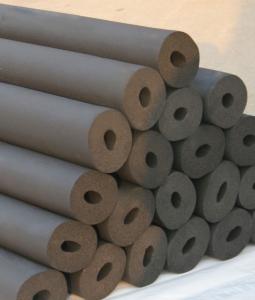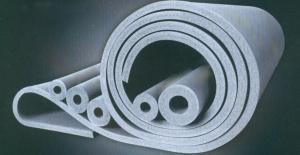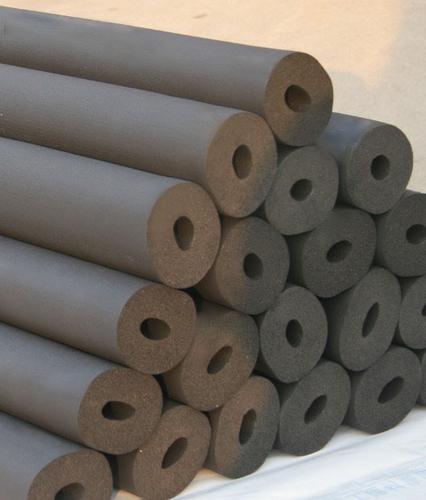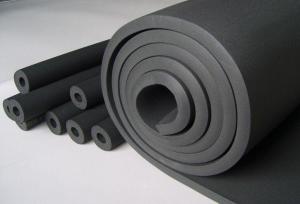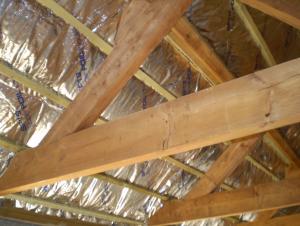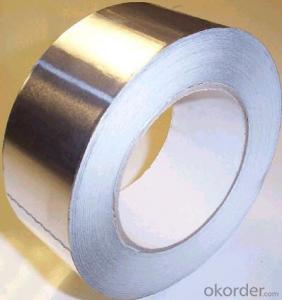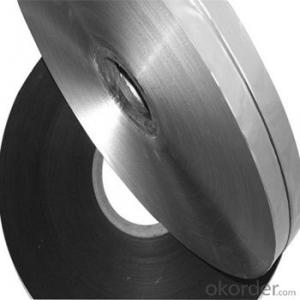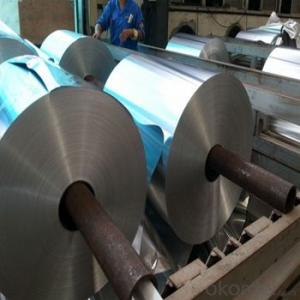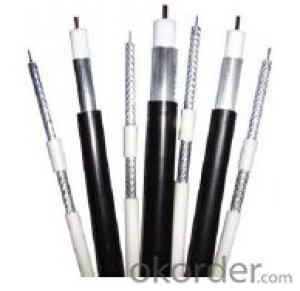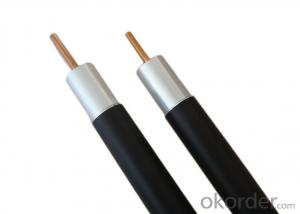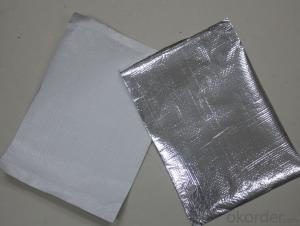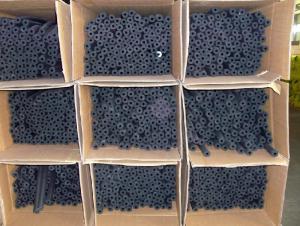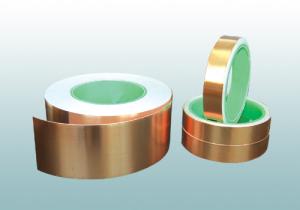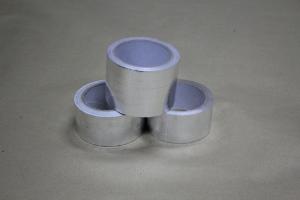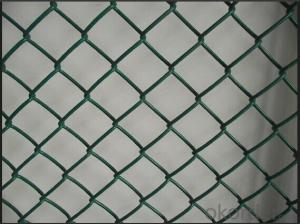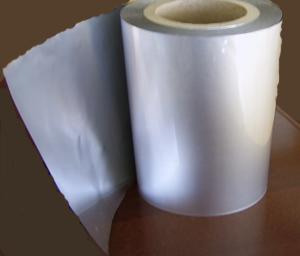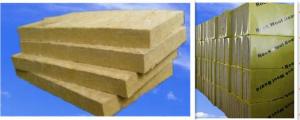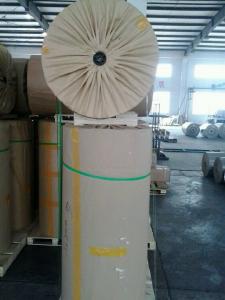Aluminum Foil Facing Flexible Elastomeric Thermal Insulation Rubber Plastic Insulation
- Loading Port:
- China Main Port
- Payment Terms:
- TT OR LC
- Min Order Qty:
- -
- Supply Capability:
- -
OKorder Service Pledge
OKorder Financial Service
You Might Also Like
RUBBER PLASTIC
rubber plastic isa high quality heat-insulating and heat-preservation material which use butyronitrile rubber and polyvinychloride(NBR,PVC) as main raw materials.
The productionprocess includes mixing, tensing and continuous extruding , heating andfoaming, cooling and cutting.
FEATURES
Lower heat-conductivity
Higher fire-blockingperformance
Damp-proof andWater-proof
Softness
Neat and
Easy to installeasy handing and storage
Good flexibilityand tenacity
RUBBER PLASTIC SHEET
Standard Size
Density(kg/m3) | 40-90 | ||||
Thickness(mm) | 10 mm | 15 mm | 20 mm | 25 mm | 30 mm |
Length (m) | 20 | 20 | 10 | 10 | 10 |
Width (m) | 1.5 | 1.5 | 1.5 | 1.5 | 1.5 |
Remark: Othersized are available upon request. Other colors are available at customers request.
Application
rubber plastic arewidely used in sound isolation of wall planking, sound absorption in air ducts,and sound absorbing decorations in entertainment spaces. It can also be usedfor shock resistance and pressure relief in instruments and equipment.
TechnicalParameters
Item | Specification | Standard |
Density(kg/m3) | 40-90 | GB/T 6343 |
Temperature(℃) | -40~110 | GB/T 17794 |
Flammability | Class B | GB/T 8624-2006 |
Class 0 | BS 476Part7∝Part6 | |
Oxygen index (%) | ≥40 | GB/T 2406 |
SDR | ≤65 | GB/T8627-1999 |
Conductivity factor Average temperature | ≤0.031 | GB/T 10294 |
Water vapor permeability (%) | ≥1.0x104 | GB/T 17146-1997 |
≤1.96x 10-11 | ||
Water absorption ratio in vacuum (%) | ≤10 | GB/T 17794-2008 |
Dimension stability(N/cm) | ≤10 | GB/T 8811 |
Crack resistance | ≥2.5 | GB/T 10808 |
Compression resilience ratio (%) | ≥70 | GB/T 6669 |
Anti-ozone | No cracking | GB/T 7762 |
Ageing-resistance | Slightly crumpling, no cracks no pin holes, not deforming | GB/T 16259 |
Packaging,
Product is packedin cartoon.
RUBBER PLASTIC PIPE
Productintroduction
rubber plastic ismainly applicable to heat insulation of central air-conditioner system,refrigerator room and pipes of all kinds of refrigeration equipment and heatingequipment.
Standard Size
Copper tube OD inch | Seamless tube OD mm | Galvanized tube DN | ID mm | 9mm Nominal thickness | 15mm Nominal thickness | 20mm Nominal thickness | 25mm Nominal thickness | 30mm Nominal thickness | |||||
mm×mm | piece | mm×mm | piece | mm×mm | piece | mm×mm | piece | mm×mm | piece | ||||
1/4 |
|
| 6 | 6×9 | 180 |
|
|
|
|
|
|
|
|
3/8 |
| 6 | 10 | 10×9 | 140 | 10×15 | 80 | 10×20 | 70 |
|
|
|
|
1/2 |
|
| 13 | 13×9 | 120 | 13×15 | 80 | 13×20 | 50 |
|
|
|
|
5/8 | 14 | 8 | 16 | 16×9 | 100 | 16×15 | 60 | 16×20 | 50 |
|
|
|
|
3/4 |
|
| 19 | 19×9 | 100 | 19×15 | 60 | 19×20 | 40 |
|
|
|
|
7/8 | 22 | 15 | 22 | 22×9 | 100 | 22×15 | 60 | 22×20 | 40 | 22×25 | 30 | 22×30 | 25 |
1 | 25 |
| 25 | 25×9 | 80 | 25×15 | 60 | 25×20 | 30 | 25×25 | 25 | 25×30 | 25 |
1 1/8 | 28 | 20 | 28 | 28×9 | 60 | 28×15 | 50 | 28×20 | 30 | 28×25 | 25 | 28×30 | 20 |
1 1/4 | 32 |
| 32 | 32×9 | 60 |
|
|
|
|
|
|
|
|
1 1/4 | 32 |
| 34 |
|
| 34×15 | 40 | 34×20 | 30 | 34×25 | 25 | 34×30 | 20 |
1 3/8 |
| 25 | 35 | 35×9 | 60 |
|
|
|
|
|
|
|
|
1 1/2 |
|
|
| 38×9 | 50 |
|
|
|
|
|
|
|
|
1 5/8 |
| 25 | 42 | 42×9 | 50 |
|
|
|
|
|
|
|
|
1 5/8 |
| 32 | 43 | 43×9 | 50 | 43×15 | 30 | 43×20 | 25 | 43×25 | 20 | 43×30 | 15 |
1 7/8 |
| 40 | 48 | 48×9 | 50 | 48×15 | 30 | 48×20 | 25 | 48×25 | 20 | 48×30 | 15 |
2 1/8 |
|
| 54 | 54×9 | 50 |
|
|
|
|
|
|
|
|
2 3/8 |
| 50 | 60 | 60×9 | 50 | 60×15 | 30 | 60×20 | 20 | 60×25 | 15 | 60×30 | 15 |
| 76 | 70 | 76 |
|
| 76×15 | 25 | 76×20 | 15 | 76×25 | 15 | 76×30 | 10 |
| 89 | 80 | 89 |
|
|
|
| 89×20 | 15 | 89×25 | 15 | 89×30 | 10 |
| 108 |
| 108 |
|
|
|
| 108×20 | 15 | 108×25 | 10 | 108×30 | 10 |
- Q: Is it possible to recycle aluminum foil with a facing layer in my country?
- <p>Yes, aluminum foil with a facing layer can often be recycled, but the process may vary by country. In many countries, aluminum foil is recyclable, including the type with a plastic or paper facing. However, it's important to check with your local recycling program, as some facilities may not accept it due to the difficulty in separating the layers. If your local program doesn't accept it, you might need to find a specialized recycling center that can handle this type of material.</p>
- Q: What are some alternative uses for old aluminum foil that are not commonly known?
- <p>Yes, there are several creative uses for old aluminum foil. You can use it to clean stubborn grime from pots and pans, as it can effectively scrape off burnt-on food without scratching surfaces. Aluminum foil can also be used to sharpen scissors by cutting through it multiple times. It can be fashioned into a fire starter for camping, as it retains sparks and heat well. Additionally, it can be used to create a makeshift funnel for pouring liquids or to wrap around stems of plants to protect them from frost. These are just a few of the many potential uses for old aluminum foil.</p>
- Q: What are the eco-friendly options available to replace plastic containers?
- <p>Yes, there are several alternatives to plastic containers that are more environmentally friendly. Glass containers are a popular choice due to their durability and ability to be reused multiple times. Stainless steel containers are also a great option as they are long-lasting and do not leach chemicals. Biodegradable materials like bamboo, silicone, and certain types of plant-based plastics are other alternatives. Additionally, using cloth bags or reusable food wraps can help reduce the need for single-use plastic containers.</p>
- Q: What are the various levels or types of aluminum foil facing materials used in construction or insulation?
- <p>Aluminum foil facing is used in various applications such as insulation and construction. The different grades include: 1) Plain Aluminum Foil Facing, which is a basic type without any additional features. 2) Reinforced Aluminum Foil Facing, which is stronger and more durable, often used for heavy-duty applications. 3) Coated Aluminum Foil Facing, which has a protective coating for enhanced performance. 4) Laminated Aluminum Foil Facing, which combines aluminum with other materials for specific properties. Each grade offers unique benefits depending on the application's requirements.</p>
- Q: Is it safe to use aluminum foil with a nonstick coating for cooking or baking purposes?
- <p>Using nonstick-coated aluminum foil for cooking or baking is generally safe, but it's important to follow the manufacturer's guidelines regarding temperature limits. Nonstick coatings are designed to withstand high temperatures, but excessive heat can cause them to break down or release harmful fumes. Always ensure the foil is placed in a way that the nonstick side does not come into direct contact with the heat source to prevent damage to the coating. Additionally, avoid using sharp or abrasive objects on the nonstick surface to maintain its integrity.</p>
- Q: What are the types of food that should not be cooked with aluminum foil facing?
- <p>There are certain types of food that should not be cooked with aluminum foil facing. Acidic foods, such as tomatoes and citrus fruits, can react with the aluminum and potentially release harmful compounds. Foods high in salt or spices can also cause a reaction with the aluminum, leading to the leaching of aluminum into the food. Additionally, cooking acidic foods at high temperatures can increase the risk of aluminum contamination. It's best to avoid wrapping these types of foods in aluminum foil when cooking, or to use the dull side of the foil facing away from the food.</p>
- Q: What are the potential health risks associated with the use of aluminum foil facing?
- <p>There are no significant health risks associated with the use of aluminum foil facing in everyday cooking and food storage. While aluminum is a common element and can be found naturally in many foods and water sources, the amount that might leach from foil into food is minimal and not considered harmful. However, it's always best to avoid wrapping acidic or highly salty foods in aluminum foil, as this might increase the potential for aluminum to leach into the food. For most people, the small amounts of aluminum that could come into contact with food from foil are not a health concern.</p>
- Q: This question asks for the method to wrap a hot pan using aluminum foil, with specific instructions on how the foil should face.
- <p>To wrap a hot pan with aluminum foil, first ensure the pan is stable and on a heat-resistant surface. Take a large piece of aluminum foil, about twice the size of the pan. Hold one corner of the foil and drape it over the pan, allowing the shiny side to face the pan. Gently press the foil against the pan, working your way around the edges to cover the entire surface. Ensure the foil is snug but not too tight to avoid tearing. The shiny side facing the pan will help reflect heat and protect the pan's surface. Be cautious while handling the hot pan and aluminum foil to avoid burns.</p>
- Q: The user wants to know if they can reuse their old aluminum foil facing to create a new one if it gets damaged.
- <p>Yes, you can use your old aluminum foil facing to make a new one if it gets damaged. Simply clean the old foil facing thoroughly, ensuring all adhesive residue is removed. Then, cut a new piece of aluminum foil to the appropriate size and shape. Apply a thin layer of adhesive, such as construction adhesive or double-sided tape, to the back of the new foil. Press it firmly onto the old facing, ensuring a smooth and secure bond. Allow it to dry according to the adhesive's instructions before using. This can be a cost-effective way to extend the life of your foil facing.</p>
- Q: Explain the differences between thin and thick aluminum foil facing in terms of thickness, durability, and usage.
- <p>Thin aluminum foil facing is characterized by its low thickness, which makes it flexible and easy to handle but less durable. It's commonly used for wrapping food, baking, and protecting surfaces. Thick aluminum foil facing, on the other hand, is more robust and tear-resistant, suitable for heavy-duty applications such as construction, insulation, and packaging. The thicker material offers better protection and durability, but it's less pliable and can be more challenging to work with.</p>
Send your message to us
Aluminum Foil Facing Flexible Elastomeric Thermal Insulation Rubber Plastic Insulation
- Loading Port:
- China Main Port
- Payment Terms:
- TT OR LC
- Min Order Qty:
- -
- Supply Capability:
- -
OKorder Service Pledge
OKorder Financial Service
Similar products
Hot products
Hot Searches
Related keywords
